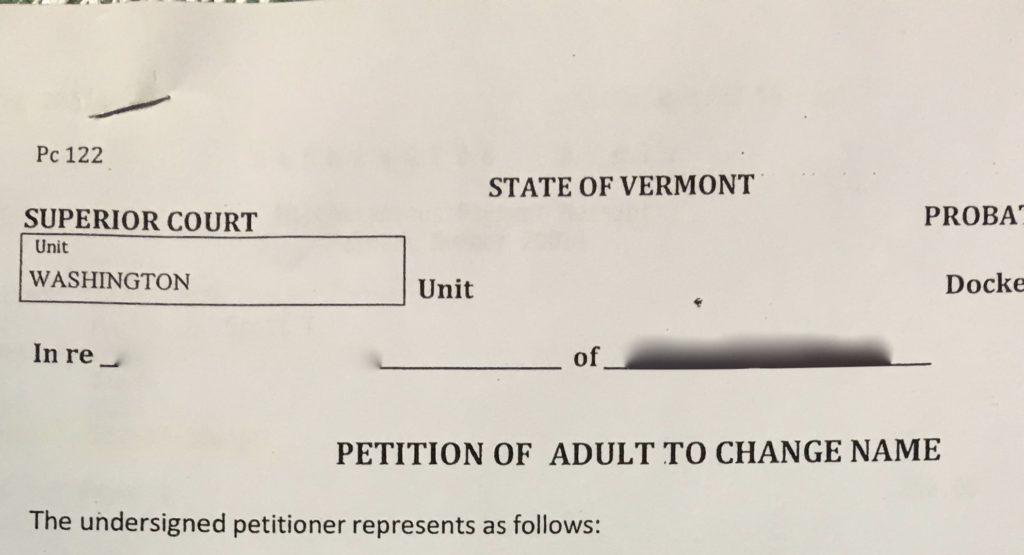Are you ready to change your name? There are many reasons why you might be interested in pursuing this journey. Although your state and local laws will dictate the exact process to follow, there are a few general steps you’ll need to take to finalize the switch.
If you’re interested in learning more about what to do, who to talk to and which forms to complete, read on. Today, we’re sharing how to legally change your name once and for all.
Ready to learn more? Let’s get started!
Step 1: Verify Your Residency

While the residence period states require varies a bit state to state, you’ll need to prove that you’ve been a resident there for some length of time before you can legally change your name.
For instance, if you want to pursue a name change in some states, including Minnesota and Virginia, you have to have at least six months of official state residency under your belt. In other states, such as Nebraska and Ohio, it’s one year. Before proceeding with any other part of the legal name change process, check with your local Court Clerk or County Clerk to understand the specific requirements of the state law in your area.
This is also the spot where you’ll obtain and file the necessary paperwork involved in the change, so it’s wise to plan a visit here as soon as possible.
Step 2: Gather the Supporting Evidence
If you’ve established that you meet your state’s residency requirements for a name change, you’re ready for the next step. Now, you’ll need to gather a few key pieces of evidence that verify your current name.
The documents that you need are the same forms of identification that you normally bring along any time you need to prove your identity. These include:
- Passport
- Social Security card
- Driver’s License (current and valid)
- Birth Certificate (current and valid)
In addition, if you have any other form of photo identification that provides evidence of your current legal name, bring it, too. While your state might not need every single one of them, it’s always better to err on the side of caution.
Step 3: Create Your Petition

Once you have your supporting evidence in hand, you’re ready to visit your local clerk of court. In addition to sharing those documents, you’ll also have to fill out a new form. This is called a Petition for Change of Name, and it includes fields for you to fill out that cover every requirement that your state enforces.
It’s smart to prepare the answers to these questions beforehand so once you arrive, the process can go as smoothly as possible. Most state and county websites have blank forms for you to download online. If you go this route, make sure that the form you download is meant for your specific state, as each will have its own unique set of requirements.
In most cases, you can print the form, fill it out, and bring it with you to the clerk of court. Or, you should also be able to fill the form out online and then print and take it. Although each state will have its own set of line items to fill out, you should at least be prepared to supply the following information:
- Current name
- Proposed new name
- Social Security number
- Current Address
- Reason for requesting a name change
In addition to the above details, most state-issued petitions will also require that you check a box confirming that you are not a convicted felon. You’ll also have to verify that there are no current warrants out for your arrest.
After you’ve completed the form, don’t sign it just yet. Next, you’ll need to visit a local notary public who will verify your identity and act as a witness to your signature.
Step 4: File the Documentation
At this point, you should have all of your required paperwork in place, including your various forms of identification/supporting documentation and your completed Petition for Change of Name.
Next, you need to actually file these forms with the clerk of court.
To do so, you’ll hand over all of them, along with a filing fee. While the amount you pay will differ by state, you shouldn’t expect to pay more than $100.
From there, the documentation is in the court’s hands. They will stamp your petition with that day’s date and file it into the local public record, making a copy for your personal records, too. Some courts might also require that you complete a separate Order that the judge or magistrate will sign.
Finally, with the paperwork behind you, you’re ready to officially state your case at a hearing. After you file your documents, the clerk will schedule your hearing docket. In some cases, your hearing could even be a few hours later, so it’s best to carve out plenty of time in your schedule that day to accommodate quick turnarounds.
Step 5: Attend the Hearing

Your last step is to attend your hearing! During this time, you may be asked to answer a number of questions, including, “Why do you want to change your name?”
Are you a parent petitioning for a name change a minor? If so, the judge will likely ask the other parent if he or she has any objection to making the change. After the hearing closes, the official Order will be signed, along with a certified copy that you can keep. If you ever need any more copies down the road, you can obtain them at the clerk’s office.
Why would you need multiple copies of the certified court order? You’ll be required to show it to any institution or government agencies to change your name. In addition, if you decide to take your name change all the way back to the beginning and change your birth certificate, your state’s Vital Records department will also need a copy so it is very handy to have multiple copies of this important legal document.
How to Legally Change Your Name the Easier Way
While the steps above aren’t overly complicated, they can be laborious and time-consuming.
That’s why name change services such as UpdateMyName.com have been growing in popularity. In many situations, this can be the time-saving approach they need to make the switch as quickly and accurately as possible.

